ANTHONY DIAS BLUETHE
COMPLETE
BOOK OF
MIXED
DRINKSMore Than 1,000 Alcoholic and
Nonalcoholic Cocktails REVISED EDITION
 In loving memory of my parents, Gertrud and Sidney Blue,who taught me about the nuances of taste andthe pure pleasure of a well-mixed drink.
In loving memory of my parents, Gertrud and Sidney Blue,who taught me about the nuances of taste andthe pure pleasure of a well-mixed drink.Contents
It is a golden age for cocktails in America. Everywhere you look there is a bar with one or more creative mixologists behind itstirring, straining, blending, and shaking. Even your neighborhood sushi bar now offers a full bar, as the kimonoed hostess politely points out. At home, the modern American is not only laying in a fabulous wine cellar, but fully stocking the bar. Every host and hostess needs to be up to speed on the latest cocktail creations. Not since the early to mid-20th century has our nation been so enthralled with mixed drinks.
Those who were of drinking age in the 70s remember what it was like before this latest mixology boom took hold. Cocktails, closely associated with the previous generation (the one that had among its members the likes of Willy Loman, Van Johnson, June Cleaver, and your father or grandfather), were considered pass, self-indulgent, and unhealthy. Bottled water was in; booze was out. Running was in; the three-martini lunch was out. The standard order at the bar in those troubled times was Perrier with lime, or for those living their lives in the fast lane, a glass of Chardonnay. Light was the watchword of the lean-and-mean set.
Bars had become a great place to display droopy plants. Like bomb shelters, they no longer served any real purpose. But just as the pendulum reached this extreme, the cocktail, long given up for dead, was struggling to its feet on college campuses. A new generation, unintimidated by the resurgent Perrier-and-lime puritanism of the 70s and 80s, was discovering the joys of a well-mixed cocktail. When this book was first written, it was just the beginning of the return to the mixed drink. The Long Island Iced Tea (a creation of the dance clubs of the Hamptons) had just vaulted to prominence.
Shooters and all manner of bizarre concoctions were waiting to enliven your weekend. Now, more than a decade later, cocktails are no longer a symbol of rebellion or counterculture behavior. They are an integral part of our 21st-century lifestylean accepted and expected aspect of our social transactions. As a result, some of the wilder and crazier drinks have disappeared. The trend is, at the same time, both traditional and modern. The return of the martinithe most classic of all drinksis the best demonstration of this.
Here we have the ultimate cocktailinvented nearly a century agospawning an explosion of creative spin-offs. First there was the substitution of vodka for gin; then came the invention of such now classic creations as the Cosmopolitan and the Apple Martini. To give proper respect to the martini phenomenon, I have added an entire chapter on martinis to this new edition. The rebirth of the cocktail has provided inspiration to the spirits industry to introduce a stream of exciting new products. There are spectacular superpremium versions of standard spiritssingle-malt scotch, small-batch bourbon, ultrapremium vodka, exceptional new gin, complex new rum, extraordinary aged tequilaas well as dazzling new products that create exciting mixed drink possibilities. Flavored vodkas, flavored gins, new schnapps, spiced rums, and dramatic new liqueurs have pushed the envelope for mixed drinks.
More potential ingredients mean more new ideas and a greater possibility of new inventions. The cocktailand all the social interaction it brings with itis back. Over the last half of the 20th century it has come full circlefrom in to out to in. It has jumped generations and moved from two-fisted drinkers to the young, hip, and happening set. It is the best time ever for mixed drinks, and it is the best time ever for a comprehensive book on the subject. The Complete Book of Mixed Drinks can be a road map to greater enjoyment and understanding of this phenomenon.
For the proactive, it can be a guide to making some of the best new combinations at home, and for those who prefer to have their drinks mixed for them, it can help to demystify the drink menus in todays trendy bars. And dont overlook the introductions to each chapter. They will inform and amuse you, and turn you into a font of knowledge. Sant! Salute! Cheers!
Anthony Diaz Blue,
March 2002
As with cooking, mixing drinks requires a full complement of good equipment. Its difficult making a beurre blanc sauce on a hot plate, and making a pineapple daiquiri is virtually impossible without a blender. The best ingredients and the right equipment are necessary to get the most use out of this book.
Throughout this book, I have tried to use generic ingredient names, not brand names. There are several reasons for this. First of all, this book, unlike numerous other drink books, is not beholden to any wine or liquor producer. Second, there are many good choices available within each category. I must point out, however, that cut-rate bargain brands are usually no bargain.
About the Bar
BASIC EQUIPMENT
The following devices are part of the complete bar.
About the Bar
BASIC EQUIPMENT
The following devices are part of the complete bar.
Except for the blender, these are all simple and inexpensive tools.
BLENDER A powerful, heavy-duty blender is needed to grind the ice needed for frozen drinks. The basic kitchen blender may not be strong enough to do the job. BOTTLE OPENER A standard lever type of bottle opener is essential, the simpler the better. CAN OPENER A church key, or standard kitchen opener, is ideal for opening juice cans. CHAMPAGNE STOPPER A good champagne stopper will preserve the carbonation in champagne and sparkling wine for at least 24 hours. The best type has a spring mechanism and two metal pieces that hook under the lip of a typical champagne bottle.
CORKSCREW The classic wine opener is the waiters corkscrew, a basic lever. There are many versions of this simple tool, and they vary widely in quality. My favorite corkscrew is the Screwpull, a remarkably well designed device full of space-age technology. If you have to open large numbers of bottles, the best corkscrew is the Leverpull by Screwpull. Many California wine folk use the Ah-So, the opener with the two prongs. This device can push the cork into the wine if youre not careful, but it doesnt puncture the cork, which is quite helpful to people who want to recork wine bottles for future use.
My least favorite opener is the wing type, mainly because the corkscrew is usually too tightly wound. All the best corkscrews have an open spiral with a channel down the middle. GLASS PITCHER A glass pitcher is always handy, and is a very attractive way to serve drinks for more than two guests. It is also useful for pouring water and juices. ICE BUCKET The ice bucket is the most practical and attractive way to keep ice at your bar. Use tongs to dispense the ice.
JIGGER A jigger provides ounce measurements and is absolutely essential. The best jigger is the double-headed, stainless steel variety that delineates 1 and 1-ounce measurements. MEASURING CUP A small Pyrex glass 1-cup measure is perfect for recipes that call for amounts greater than 2 ounces. MEASURING SPOONS A standard kitchen set will work perfectly. MIXING GLASS The best of these have a pouring spout, but any tall, 16-ounce glass will work. MIXING SPOON Preferable is a long stainless steel spoon with a thin twisted handle that can be used for mixing, stirring, and sometimes, muddling.

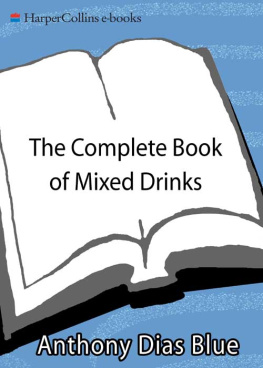
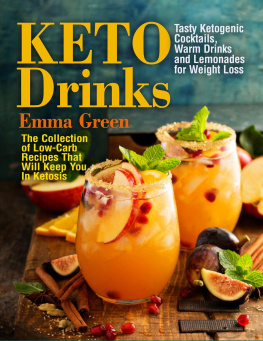
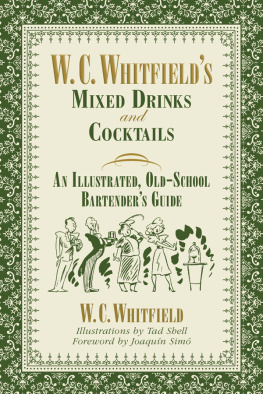
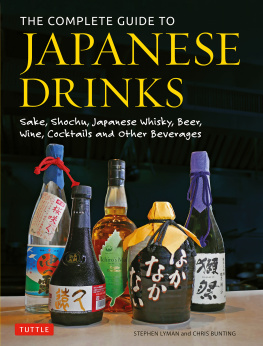
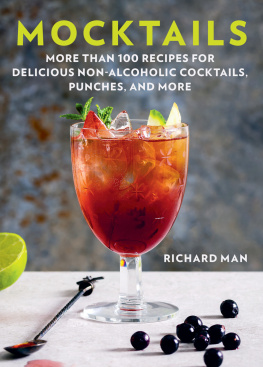
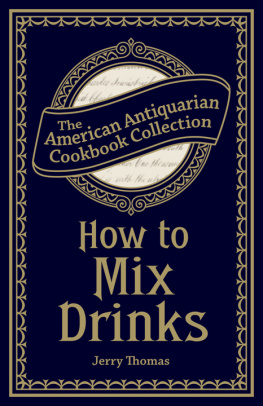

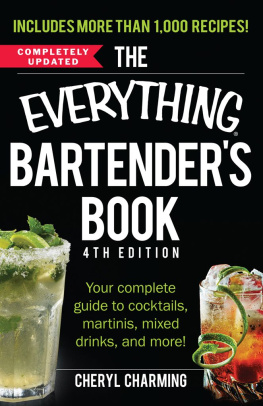
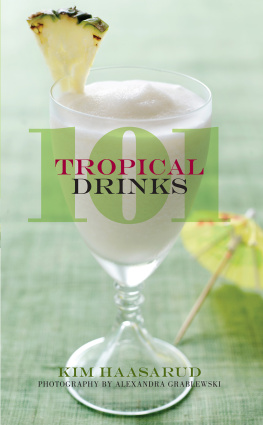
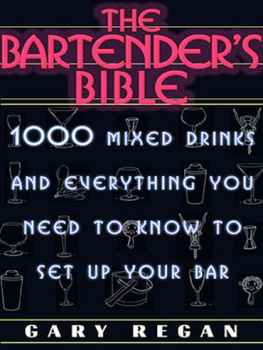
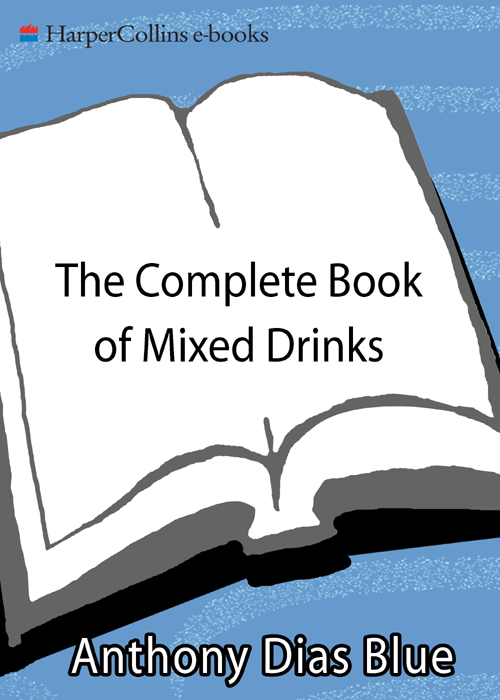
 In loving memory of my parents, Gertrud and Sidney Blue,who taught me about the nuances of taste andthe pure pleasure of a well-mixed drink.
In loving memory of my parents, Gertrud and Sidney Blue,who taught me about the nuances of taste andthe pure pleasure of a well-mixed drink.